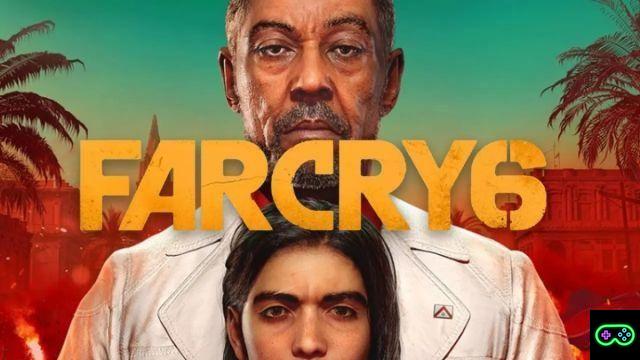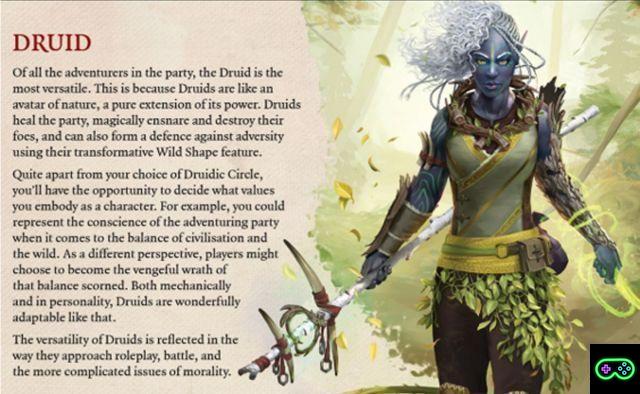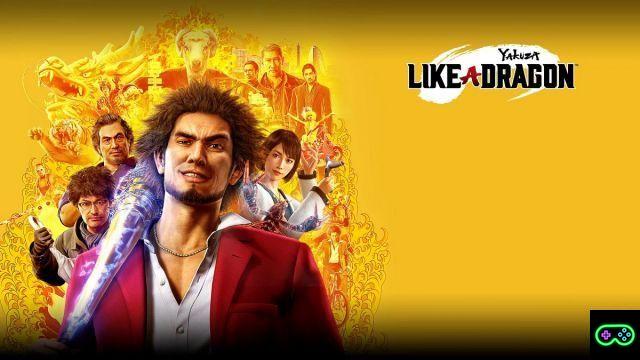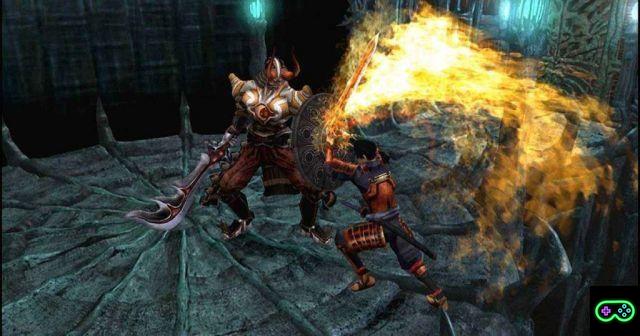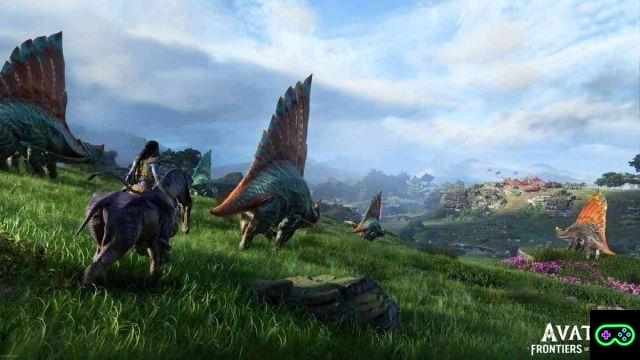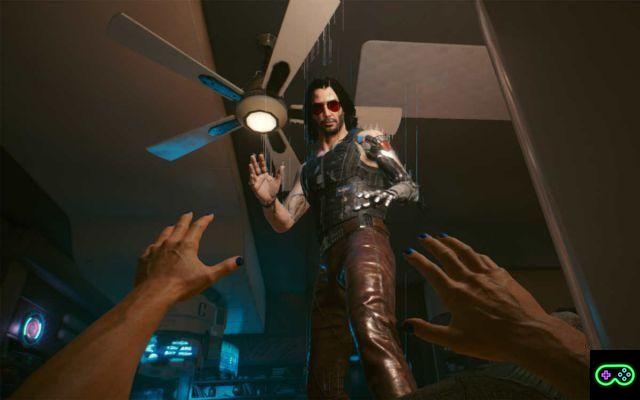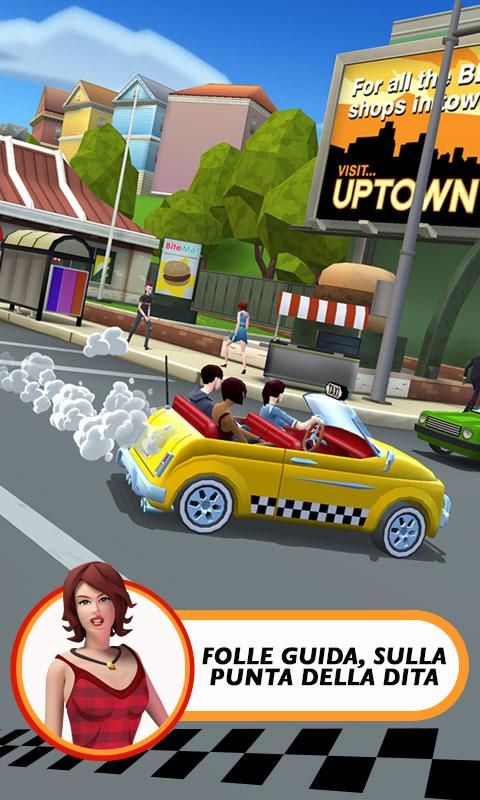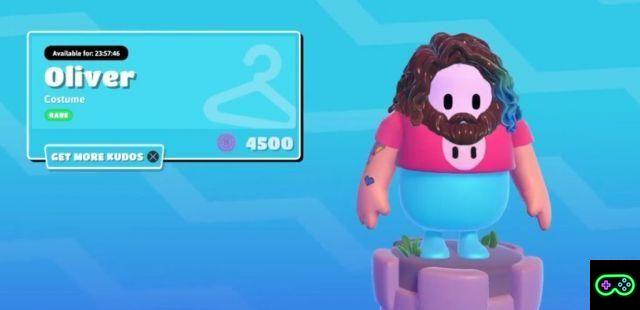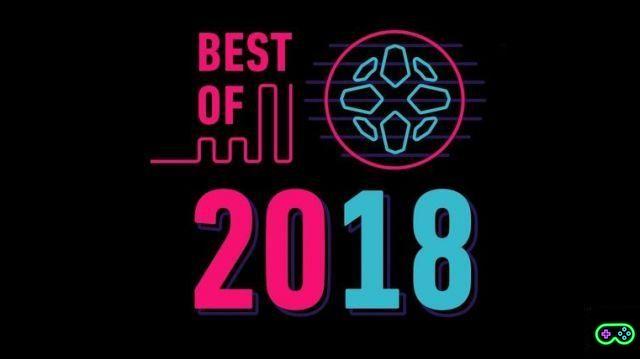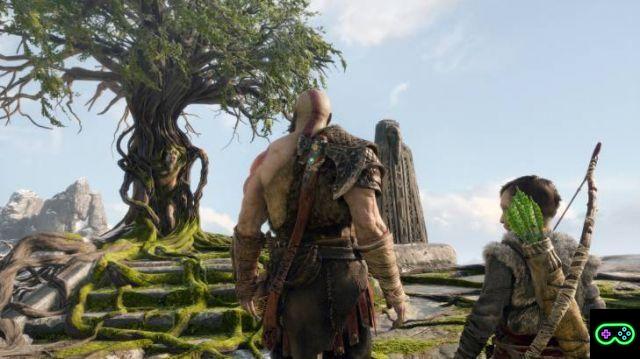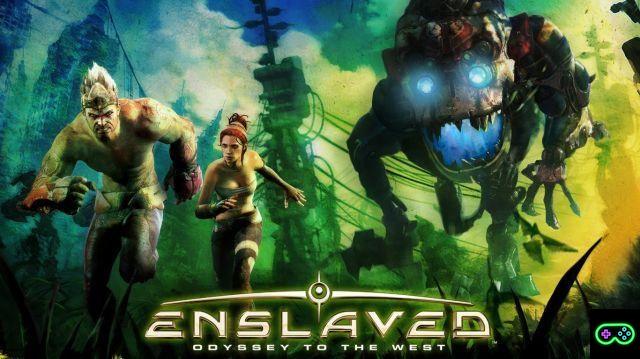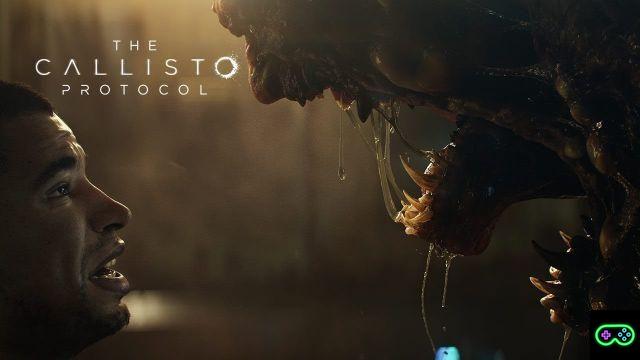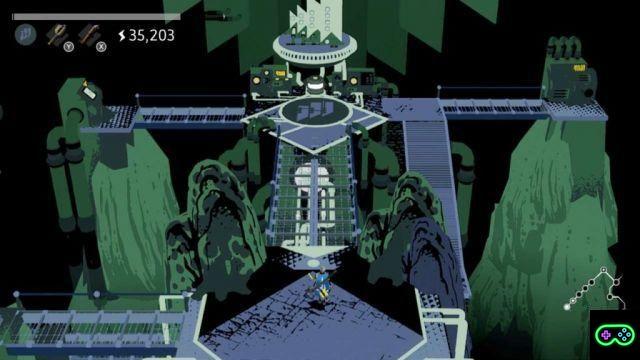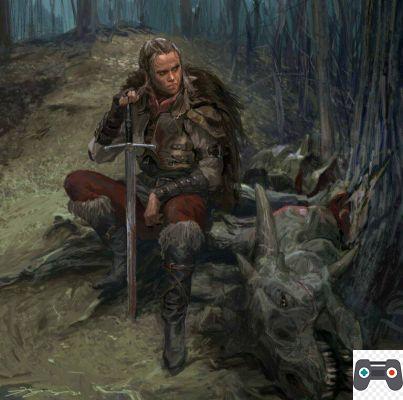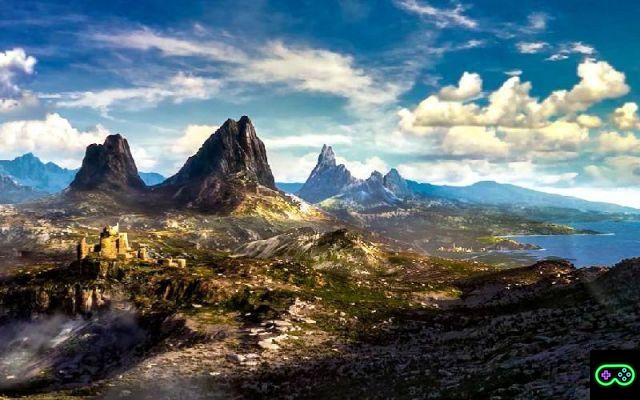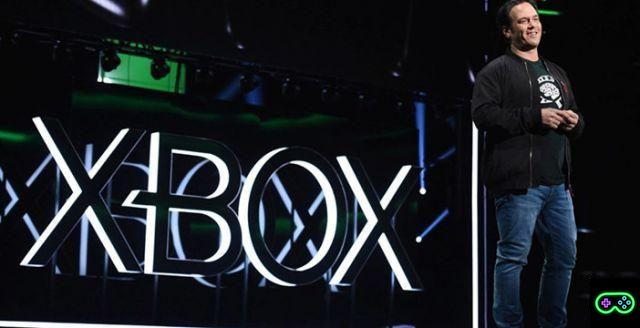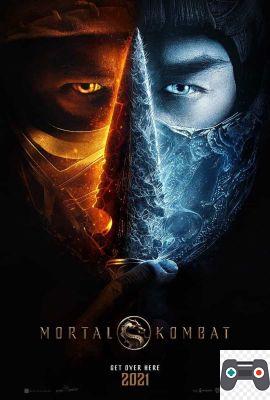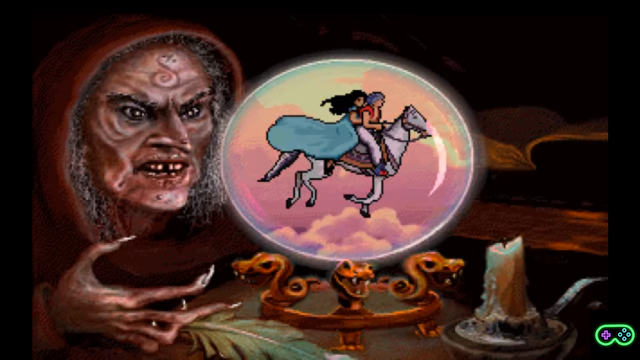The Last Guardian is the most recent work of Fumito Ueda, creator of Ico and Shadow of the Colossus. The game was released in 2016 at the end of a troubled gestation which, after the first teaser trailer released by Sony in 2009, resulted in the project being moved to PS4 due to the technical limitations of the previous generation of consoles, for which it was originally understood. All three of Ueda's games are characterized by a silent narrative, with dialogues reduced to a minimum and no textual description: the task of reassembling the often evanescent plot is left to the imagination of the player, who is responsible for filling in the many gaps in the story with his own theories.
For me it is not important to tell the details of a story. In Japan we have a form of poetry called haiku, in which things are not explained in detail and in which the reader is left to understand or use his or her imagination to interpret the content.
Fumito Ueda, interview published on Gamesindustry on 18/05/2017.
The interpretation of some narrative junctions is therefore subject to free speculation although Ueda, in the course of various interviews, has suggested that the three games share the same narrative universe, even if there is no absolute certainty about the temporal succession of events. My guess (which seems to me also the most popular, after a brief reading on the net) leans towards the following chronology: The Last Guardian, Shadow of the Colossus, Ico. Therefore, the most recently published game would be the first in order of narrative time, and the events that occurred in it would cause all subsequent ones. This is why, before talking about the game in question, it is necessary to consider the first two chapters, which will allow us to give credit to subsequent speculations. Even before being narrative, the link between the three titles also passes through a shared symbolic apparatus: the opposition (but also and above all the interdependence) between “white” and “black”, concepts that in each chapter take on different declinations. Let's see which ones, starting with the first published game.
Ico: black magic and white magic
The protagonist of Ico is a little boy with horns - belonging to a cursed progeny - who is imprisoned inside a huge fortress-prison by the soldiers of his tribe, "for the good of the village". It so happens that the shelf on which the stone sarcophagus is placed in which Ico is locked up gives way under the weight of the years: the sarcophagus falls from its niche and opens, freeing the boy, who is completely alone inside the gigantic ruined building. Soon Ico meets a young girl, who is also a prisoner, who speaks a mysterious language.
After freeing her from her iron cage, Ico takes her with him in search of an escape route, but their path will be hindered several times by a dark witch, who proclaims herself queen of the castle and mother of the girl, whom she calls Yorda. She has the magical power to unlock some seals placed to protect forbidden areas of the castle, including the main door and the throne room. Eventually Ico manages to defeat the witch using a magic sword and, while the castle collapses and sinks, Yorda loads the unconscious boy on a boat and makes him take off, saving him. For Yorda it seems the end. However, in the epilogue, Ico wakes up on a beach and finds the girl in a state of unconsciousness, not far from him. The game ends with Ico and Yorda eating watermelons on the water's edge.
This epilogue is almost certainly a fake happy ending. Yorda's survival from the collapse of the castle is nearly impossible to justify. Ueda himself has suggested that such a final scene would only be a dream of Ico asleep as he drifted away. Beyond the speculations on the ending, it is interesting to consider the opposition between white magic, embodied by Yorda, and black magic, represented by the witch. It is a dichotomy of which some nuances are however suggested. Yorda is a being of light, and appears to represent purity and innocence. His power is saving for Ico and harmful for the witch: the sword with which the boy stabs his enemy is imbued with the white magic that Yorda emanates to unlock the seals of the castle; the same magic allows you to obliterate the Shadows, the army of evanescent servants of the witch who have the task of kidnapping Yorda by ripping her from the protagonist's case. but yet Yorda herself has a dark side: before meeting her, Ico dreams of her in the form of a shadow creature, and it is precisely in this state that the girl will eventually find herself, when she saves our fainted hero by embarking him just before the collapse of the fortress. After all, the queen tells Ico that the purpose for which Yorda exists is to act as a vessel for herself: the witch intends to take possession of the girl's body, when her time comes. What does this mean? Is it just a matter of waiting for her to mature?
More likely, the queen intends that the day will come when the girl's magical powers will be fully developed. Then, by combining with her, the witch can gain a power never seen before, as well as a rejuvenated body. In short Yorda, while appearing as a supremely good being, is also an indispensable element for the realization of the evil plan of the witch. But how does the question of the curse fit into this plan? The witch seems to ask the village for these horned children as a tribute, but what does she actually do with them? The simplest answer is that she uses them to generate the Shadows, her army of minions: these minions can take various forms, but it will not escape the player the fact that among them there are humanoids and horns, which makes the almost immediate association. This same dark matter covers and surrounds the queen as a protective shield, and is evidently able to absorb the power of Yorda (if Ico does not defend the girl, the shadows kidnap her and drag her into the darkness, causing the game over. ). A logical consequence is that children also serve another purpose: to feed Yorda itself.
When we defeat the Queen, in fact, the sarcophagi release discharges of white magic that invest Yorda (transformed into a statue by a witch's spell): the girl is revived, but in the form of a shadow, just as Ico had dreamed of her at the beginning of the game. Since we know that white magic is used to break magical seals, the reasoning is quickly done: the girl's light body was but a shell to her true essence, which is dark. And it is such because Yorda is not human, but is a being of the same nature as the Queen, who probably created her (after all, he calls her "daughter", although there is no trace of any companion of the witch, who reigns alone in a castle whose hall of honor houses a single throne).
The fact that Yorda's existence is partially or totally dependent on sacrificed children emerges from the analysis of some lines of dialogue cut by the final game, in particular an exchange between Yorda and the Queen, in which the former expresses the will to leave the castle, preferring death to the idea of surviving thanks to the sacrifice of the innocent:
I’m not coming back. You’ve got it all wrong, Mother. I’m going to live the way I want to. Even if I have to pay for it with my life. It’s far better than surviving on the sacrifices of an innocent people.
Yorda - dialogue cut by Ico and recovered from the dataminer einstein95.The coexistence of light and darkness in the same individual is the central nucleus of Ueda's entire poetics: black and white are not waterproof categories, there is a gray area represented by every living creature, which encompasses them both. This is why Yorda, white on the outside, is black on the inside (also, in this state she saves Ico's life in the finale), and in the same way the queen, wrapped in a black cloak and surrounded by scents of darkness, has a face as white as that of Yorda: that his is an extreme attempt to reconstitute itself as a unity of light and shadow, or as a complete being, after having split into two separate entities for some unknown reason? It is not known, but it is reasonable to assume since the theme of duality will also be central in Ueda's subsequent works.
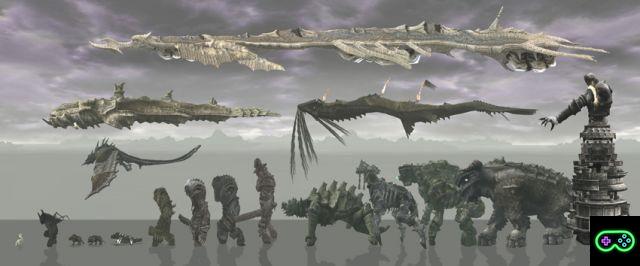
Shadow of the Colossus: agatodemone e cacodemone
An article dedicated to the explanation of the ending of Shadow of the Colossus; I will add a direct link when it is published, inviting anyone who does not have in-depth knowledge of the game narrative to read. Here it is enough to briefly repeat a few key points: the protagonist Wander enters the Forbidden Land, taking with him the helpless body of his beloved Mono. Ancient legends tell that in that Forbidden Land it is possible to resurrect the dead. Dormin, the God who inhabits the forbidden temple, wants to make a pact with Wander: if the boy takes down the 16 giants that inhabit that land, Dormin will resurrect the girl. Each kill involves the release of dark energy from the body of the behemoths, energy which is absorbed by Wander. Dormin's plan is clear: to incarnate in the boy, finally taking on a physical form. However, his plan is thwarted by Lord Emon, who arrives at the temple at that very moment, with guards in tow.
The shaman casts a powerful light spell that sucks in the dark demon, obliterating it, but also collapses the access bridge to the Forbidden Land, now isolated forever. Just when it all seems over Mono opens her eyes, alive. There is also another surprise: in place of Dormin and Wander, both vanished, a horned baby appeared. Mono takes him in his arms and, together with the Agro steed, ascends to the secret garden of the temple, an Eden in which the three are welcomed by fruit trees and harmless animals: life has returned to flourish in those desolate lands.
One life for one life, or rather two: the killing of the giants causes the reconstitution of the physical form of Dormin, which had been divided into 16 parts and rendered harmless; however the ritual also brought Mono back to life; however, one wonders if she is really the same girl that Wander has known and loved. Dormin himself, in fact, is a dual entity: he speaks of himself in the plural and his voice is double, masculine and feminine. Like the queen of Ico, Dormin too consists of a part of shadow, imprisoned in the colossi, and a part of light, through which she communicates with the protagonist. It is therefore legitimate to hypothesize that, when the Shadow incarnates in Wander, the Light takes possession of the body of Mono. This is more than a suspicion, since in the course of the first interaction between Wander and Dormin, the latter laughs at the boy and his intention to bring his beloved back to life:
The souls that have been lost can no longer be recovered ... isn't this the law of mortals? However with that sword… you could do it. (…) Obviously as long as you do what we ask of you.
Dormin - From the first dialogue between Wander and Dormin.Dormin therefore does not explicitly say that he has the power to restore life to the dead. The joke "Could you succeed", which in English has an impersonal form ("it may not be impossible"), in fact indicates that it is the ritual itself that causes the resurrection: of the girl and of Dormin himself, as we have seen. The pact that Dormin proposes to Wander would therefore be doubly deceptive: not only hides from Wander the contraindication of his possession by the dark entity, but also the fact that the “risen” Mono would not be the beloved girl at all, but the female component of Dormin himself. This supposition would credit even more the fan theory that recognizes Mono as the queen of Ico, inexorably linked as much to the darkness as to the cursed children, whose lineage originates right in the finale of Shadow of the Colossus.
As to whether Shadow of the Colossus is an Ico prequel, there is practically no doubt. As we know Fumito Ueda is extremely reluctant to provide any information about the interpretation of his games or even just the narrative links between them. However, in the course of an interview he admitted both that both games share the same storyworld, and that the child of the ending is the progenitor of the bloodline of cursed children, which is enough to place the narrative of the game in a time before the facts. turned into Ico. However, some doubts remain about the "cursed fate" of Mono prophesied by Lord Emon, which made it necessary to kill him. One might think that Emon foreshadowed the future transformation of Mono into a witch and therefore decided to sacrifice it, unaware however that this decision would have triggered the events that would have led to the fulfillment of the prophecy itself. The game does not delve into this aspect of the story, destined to remain the most mysterious and open to free interpretation.
The Last Guardian: natural and artificial
NB: in the game the word "Trico" indicates both the beast co-protagonist of the adventure, and each individual of the same species, thus taking the form of both a proper name and a generic name. To avoid problems in understanding the text, I decided to adopt the following distinction: “Trico” for the co-protagonist and “trico” for any other copy.
An unnamed boy wakes up in an unknown place: a semi-dark cave, in the center of which there is a huge chain. In a short time the guy realizes that a huge "man-eating beast: Trico" is tied to the chain. The beast, a chimera with characteristics reminiscent of dogs, cats and birds, bleeds from spears stuck in various points of the body. The boy hesitantly frees the beast from the chain and spears. Slowly the two work together to explore the cave. The boy soon realizes that he is very far from home: Trico has in fact kidnapped him, snatching him from his native village during a night sortie. In flight he took him to the Nest, a huge crater with rocky walls that are insurmountable for humans, which houses artificial structures in ruins, the work of an unknown civilization. Now close to his goal, Trico is struck by lightning, which causes him to fall.
Time the boy is determined to climb the highest tower of these ancient remains, looking for an escape route to the outside. Trico, now fond of our protagonist, will help him in the enterprise. Our hero will discover that he can use the tail of the beast as a weapon: through the use of a mysterious artifact in the shape of a shield, found inside what appears to be the burial chamber of an ancient inhabitant of the Nest, the boy is able to release an energy ray from the end of his tail from the destructive power, which will allow you to make your way through environmental obstacles, automata that repeatedly try to stop them and other hostile specimens of trico. Arriving at the top of the tower, the boy will come across what he calls "Lord of the Valley": an energetic nucleus that controls all the tricos through radio impulses: the tower is in fact nothing more than a gigantic antenna, legacy of an ancestral people, perhaps extraterrestrial, with sophisticated technology.
The Lord of the Valley, therefore, uses the kidnapped children as a source of energy and the Trico for supply and attack: in the end of the game the beasts attack Trico, whose tail is amputated. When all seems lost, our protagonist uses the beast's severed tail to direct an energy discharge against the Lord of the Valley, who is destroyed by it.. The antenna collapses and the beasts fall helpless, freed from mind control. Trico gathers his last energies to save his little friend and bring him back to his native village. Here the boy, semi-unconscious and picked up by the natives, orders Trico to leave, for his own safety. Trico flies away and the two will never see each other again. Thus we arrive at a tender epilogue in which, many years in the future, the magical shield is found in the village under layers of mud which must have been lost in the agitated moments of the aforementioned rescue. The boy, having become an adult, immediately recognizes the object, and raises it to the sky. Far away, in the still intact Nest, in the darkness of the cave where it all began, four large eyes glint in the darkness: Trico is alive, and fortunately he is not alone.
The Last Guardian is a fairy tale with an extremely linear and much more explicit plot than the two previous games. Furthermore, its ending is unequivocally a happy ending, after all there is not even a real villain in the game - it is ultimately about turning off a device that has been left on. So what is there to explain? From the point of view of the plot, absolutely nothing: the events are clear and exhaustive. However, the correlation between this game and the previous ones remains to be investigated: Does The Last Guardian belong to the same narrative universe as Ico and Shadow of the Colossus? If so, where does he rank temporally? Do the events narrated by this game have repercussions on the previous ones and / or vice versa? Let's speculate!
The return of Nimrod
In the early stages of the game we recover the magic shield inside what looks like a burial chamber. A mysterious energy seems to permeate the entire space in the form of bluish light. That the place is full of energy is suggested by the presence of a round swimming pool, quite similar to that present in the temple of Shadow of the Colossus, used by Lord Emon in Dormin's segregation ritual. So who is the being buried in the grave? Can it have a connection with Dormin? There are various clues that suggest a correlation.
The anagram of "Dormin" is "Nimrod", the name of the legendary biblical king responsible for the construction of the Tower of Babel. However it is evident that the ancient biblical king was also a source of inspiration for The Last Guardian. The parallelism between the Tower of Babel and the colossal communication tower is clear: in addition to being the tallest building of all, it is also the transmitter of a radio signal that calls the tricoes together. In the Old Testament tradition, Nimrod is also described as a sovereign hunter and conqueror. In fact, various elements we encounter during the adventure suggest that we are faced with a huge battle arsenal, the legacy of a warrior people: the trico are manipulated and armored animals, transformed into real living weapons, and moreover the whole valley is populated by warrior automatons, as well as probable workers and builders of all the buildings.
Furthermore, in the Divine Comedy Dante describes Nimrod as a giant (referring to a tradition rooted in medieval times), and there is no doubt that the dimensions of the sarcophagus on which the shield rests are oversized for a human being. According to other sources, Nimrod would have married the legendary Middle Eastern queen Semiramide, giving life to Tammuz, a Mesopotamian god associated with the harvest, grazing of cattle and animal and vegetable fertility.. That this inspired Ueda for the ending of Shadow of the Colossus, with the "rebirth" of Wander / Dormin in the form of a child with horns and the presence, at the top of the temple, of the secret garden, the only luxuriance of life in the desolation of Forbidden Land? In short, the clues suggest an identification between the figures of giant of The Last Guardian and Dormin!
The timeline of games
So where does the game narrative fit in time? Based on everything that's been said, the events of The Last Guardian can only take place before those of Shadow of The Colossus. This is due both to the state of conservation of the structures and buildings that we encounter in TLG, much more intact than the ruins of SotC, and to the fact that Dormin was destroyed at the end of the latter. Then there are other factors that we have not considered so far: in TLG there is no trace of children with horns, nor is there any mention of a curse. Furthermore, the men never seem to have come into contact with any form of magic, which happens for the first time at the end of the game, with the discovery of the shield. We players are then aware that "white magic" is nothing more than a form of energy synthesized by the machinery of the Nest. But it is evident that the characters of the game are not able to understand all this, and in their eyes and the protagonist's eyes, the mysterious powers of the shield and of the artificial structures encountered can only be magical.
The Lord of the Valley himself, as the boy calls him, is nothing more than an energy core that powers the transmission antenna: the equivalent of a large battery, from which no form of intelligence transpires (same thing for "black magic": it would be nothing more than a different type of energy, we could say of the opposite pole compared to the white one, used with an insulating function; in fact it incorporates the energy core and prevents knocks and damage), and a similar form of energy accumulator is recognized as it is in Ico, precisely in the spheres placed above the entrance door of the castle.
Probably the accumulated energy serves to feed the sarcophagus in which the giant rests, perhaps suspended in a state of hibernation. We can wildly fantasize about the reason for its state: is it an alien creature, crashed to Earth aboard its spacecraft, whose impact gave rise to the gigantic crater? Or is it just one of the many individuals belonging to an ancestral race that inhabited the planet since ancient times and which is now almost extinct, with some last survivor who has tried to delay their own disappearance as much as possible? The latter hypothesis would explain the presence of multiple tomb sites (the TLG pool cannot be the same as that of SotC, unless millions of years have passed, during which the morphology of the territory has completely changed) and their transformation. in places of worship by humans. What is evident is that The Last Guardian is an invitation to reflect on the relationship between nature and technology, underlining the opportunities and risks of the second applied to the first. Technology is in fact morally neutral: its positivity or not lies in the intention of those who use it.
What is Trico and who are the Colossi?
Reflection on technology-related opportunities and risks is highlighted from the core of the gameplay: the collaboration between the little boy and Trico. The animal is in fact both a resource and a weapon, both docile and destructive. The mind control operated on the tricos allows them to be used as agents of death, but in theory it would also allow their use for a good purpose. In any case it is evident that Ueda negatively judges the application of technology to impose control over living beings by third parties. The task of the tricos is the supply of energy through the kidnapping of children destined to be "squeezed" to extract the precious white energy, and the tricos themselves are expendable when no longer responsive to commands and therefore "unusable". But here is an example of the positive application of the technology: the cuirasses that cover the trichos are extremely similar to those that cover the giants, which as we know are shells for the fragments into which Dormin was divided. It is therefore clear that the giants are a human creation, starting from the alien / ancestral technology found fortunately in a time following the ending of TLG.
In this case though the fact that the giants are armed and dangerous is not for a function of war weapon, but for self-defense: their creation in combat gear is aimed exactly at preventing their destruction, a prelude to the reconstitution of Dormin. In short, the creation of the giants is a prerequisite for maintaining peace and safeguarding village life. So the comparison between TLG and SotC is an example of the idea of the neutrality of technology typical of Ueda's poetics.
We have enough elements to enjoy ourselves at groped for a synthesis: long ago a people of giants inhabited the world. Equipped with refined technologies, the giants were able to extend their control over any living creature, perhaps even successfully attempt genetic engineering experiments [the fantastic bestiary accompanying TLG's opening credits could be interpreted as a catalog of achievements. of giants in this field]. Inexorably, however, the glory of the world passes away: for unknown reasons the people are extinguished, but at least an individual manages to survive in a state of hibernation. Dormin realizes that he can survive by finding vital energy from a particular species that has peeped into the world: the helpless humans, for whom even a single trico represents an invincible man-eating beast.
These primitive peoples get used to considering the occasional kidnapping of children by beasts as a sacrifice necessary to maintain the status quo, perhaps even to judge it as a divine will. This is until the singularity of the events narrated in TLG changes the cards on the table: men finally have access to what they consider magic. Over decades, perhaps centuries, they explore the planet and dominate it, rediscover ancient pools of energy, vestiges of the tombs of the giants, and build temples around it to perform sacred rites. In the meantime, in the nest, the energy has failed. The sarcophagus can no longer feed the sleeping giant, so it opens to release it. Dormin wakes up, very weak, report, a being who desperately desires to suck up living energy in order not to succumb. Attack humans, who are terrified of it, until a shaman, the most knowledgeable in the magical arts, manages to defeat him with the help of a sword imbued with magic / white energy.
The shaman dismembers Dormin's body into 16 parts and, using all his wisdom, he harnesses each part in a sentient and armored envelope, sealed by white magic and able to defend himself: they are the colossus, entities around which defense structures are built so that Dormin can never free himself again. Over the years, however, the earth dries up, resources are scarce, and humans are forced to leave those territories in search of more hospitable places. It is decreed that no one will ever have to set foot again in what will henceforth be defined as Forbidden Lands. Generations pass and much of the ancient knowledge is lost, but the prescription continues to apply. However, the current shaman Lord Emon is troubled: he portends misfortune coming from a girl from the village, named Mono. There is nothing else to do, you have to act: Mono is sacrificed for the good of the village. But Lord Emon did not take into account a young boy in love with the girl, willing to sacrifice everything and everyone to get her back: Wander.
Wander crosses the Forbidden Lands, and Dormin finally finds the opportunity he was looking for. He deceives the boy, who destroys the giants and allows Dormin to reincarnate, albeit in a dual form, in Wander and Mono. Emon resorts to an emergency ritual that annihilates the Shadow of Dormin, reducing him to a harmless horned child. Dormin / Mono, perhaps guided by a residual love of the girl of the past towards the beloved Wander, manages to send the newborn to the human village, saving him. To do this, he uses the passages created by the energy intersection points opened in those lands, already used by Wander as a means of teleportation.
A lot of time goes by. Dormin / Mono is now old, corrupted by the spirit of the giant eager to regain the ancient power, to reunite into a single entity. But will it really be possible? Its dark component, now diluted in generations of humans, seems irrecoverable: the cursed lineage is doomed to transmit the dark seed of the giant from generation to generation through horned children. Perhaps this is precisely the key: presenting oneself to humans as a Queen, having a castle built behind the promise to take care of those cursed children, having them carried every time one is born, channeling their energy inside a sentient envelope, waiting the right moment to attempt a high-tech operation: reconstitute himself as Dormin by reuniting his dimension of Light with that of Shadow, that is, Yorda and the Queen. But we know that fate, as Ico, decided otherwise.
At the end of this excursus on the narrative of the three games, it is obvious that any attempt at synthesis must be intended for pure pleasure: despite some fixed points, this reconstruction is largely due to my personal inventiveness, and is neither more nor less valid than numerous other theories that have sprung up over the years, which an avid reader can enjoy tracking down on the web. One of the most fascinating reasons of Fumito Ueda's works is the peculiarity of being narratively open works, whose aesthetic suggestions and numerous thematic food for thought have been able to feed for years (and will certainly continue to do so in the future) the imagination of all those who have had the good fortune to immerse themselves in it.




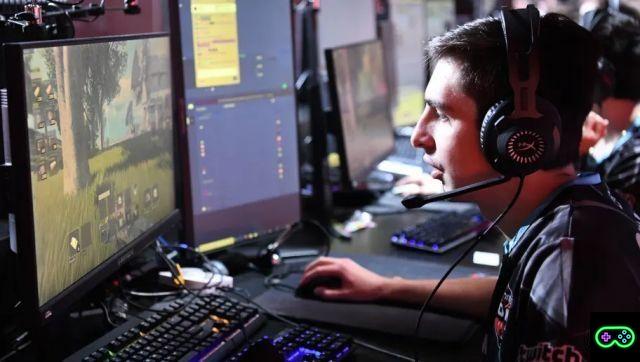
![[The Bear's Lair] God of War: Betrayal and Greek mythology](/images/posts/17432d3b12ecfec44b0b855d20c7520f-0.jpg)
